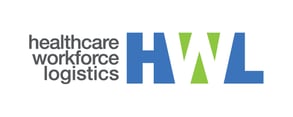Recent years have seen the healthcare industry battling increasing obstacles, but according to multiple surveys and polls, from ACHE and MGMA respectively, staffing shortages remain the top concern of healthcare leaders. While staffing shortages have long plagued the industry, the rapidly rising agency rates for contract nurses and other staff are no longer sustainable for many organizations.
One increasingly popular alternative is the Internal Resource Pool (IRP). While the concept of a central database of skilled, versatile talent is not new, advanced technology has made IRP management easier and more effective than ever. Could this be a viable solution for your organization? Or if you already have an IRP, are you leveraging the latest technology to manage it?
What Is an Internal Resource Pool?
An Internal Resource Pool references an organization’s central database of contract and/or employed clinicians who have been pre-vetted and credentialed to work in a given facility or department. Some organizations call this central staffing, an in-house pool, per diem, or even, on a smaller scale, a “float pool.” The organization pulls from the database when gaps arise for any reason--staff sick days, medical leave, vacation, turnover, or a spike in patient volume or acuity. Traditionally, a department manager might report the gap to a central staffing office, where they would start calling the list until they found a nurse to take the shift. From there, the manual process of scheduling, managing availability, checking credentials, and tracking timesheets begins.
Technology Is the Key to IRP Efficiency
Fortunately, cutting-edge technology and automation make this time-consuming process more efficient. With HWL proprietary IRP platform, the vacancy is pushed to the system, where the need is broadcast to the database via mobile app, text, VOIP, and email. Willing IRP staff submit their interest in the job, and the department manager can quickly choose from the available, pre-screened clinicians. If the need is not filled, only then does the job go to external agencies for further assistance.
Automation and technology is the key to efficiency in this process. Ongoing, online recruitment marketing attracts talent directly to the database. Job openings are deployed to relevant IRP staff in real-time, and managers can quickly approve submissions and prepare for onboarding. Through automation, the IRP platform can do in hours what once took weeks.
Key Features of a Quality IRP System
By utilizing an IRP, healthcare organizations are able to build more efficient internal resources that drastically reduce the reliance on external staffing vendors.
Here are some of the features of HWL's internal resource pool system:
- Master and unit-based scheduling
- Cross-browser compatibility
- Broadcast open shifts via mobile app, VOIP, text, or email
- Staff can accept and view schedules via any device
- Custom filters for open shifts by type, time, location, and more
- Tracking and management of all IRP staff documentation and credentials
- Real-time performance analytics and evaluations
- Responsive design
4 Benefits of an Efficient IRP
New technology has transformed what IRPs can do for health systems, and the timing couldn’t be better. With worsening staff shortages, climbing labor costs, and rising burnout among healthcare clinicians, an IRP allows organizations to better meet patient demand, reduce contingent staffing expenses, improve staff satisfaction, and attract a new generation of “gig” workers.
An IRP platform can serve a single facility or a multi-facility system including acute care centers, ambulatory/urgent care centers, home health, and SNF/LTACs. The IRP may include clinicians, allied staff, and non-clinical workers. The flexibility of a high-tech IRP platform offers many benefits including:
1. Ability to Flex Up or Down As Needed
An effectively managed IRP allows organizations to easily broadcast openings to a database of qualified clinicians who can submit interest and quickly be approved for the job with the click of a button. Finding coverage for gaps--both planned and unexpected--has never been smoother.
2. Reduce Premium Labor Costs
By sourcing talent directly from the IRP, organizations reduce agency involvement and pay lower rates. Clinicians still earn a competitive market rate, but the overall cost to the organization is lower.
3. Improve Satisfaction
With a seamless process for filling temporary staff vacancies, permanent staff is no longer burdened with requests to work overtime or high nurse-to-patient ratios, lowering the risk of burnout, improving overall job satisfaction, and increasing retention, all of which ultimately leads to greater patient satisfaction.
4. Appeal to Gig Economy
Across industries, the use of short-term, contract labor is on the rise. This “gig economy” appeals to workers who want more control over when and where they work. Through IRPs, the healthcare industry can attract and develop relationships with this type of worker. At the same time, hospitals can engage with workers they are familiar with, while more efficiently staffing their facilities.
The Future of Supplemental Staffing
Internal Resource Pools are not a new concept, but there are several reasons healthcare organizations are reinvesting and increasingly relying on IRPs. Obviously, the worsening staff shortages makes the use of flexible labor imperative but rising agency costs have become unsustainable. Advances in technology have made it possible to connect with IRP staff directly and manage the process end-to-end. While some of the software that organizations are already using (Kronos, Cerner, Lawson, etc.) has the functionality to accomplish parts of this same process, a true IRP platform such as the cutting-edge offering from HWL can be customized to build and manage an IRP that meets the needs of your organization today and into the future.
Reach out to the HWL team today to learn how our cutting-edge IRP platform and expertise can optimize the performance of your IRP.


